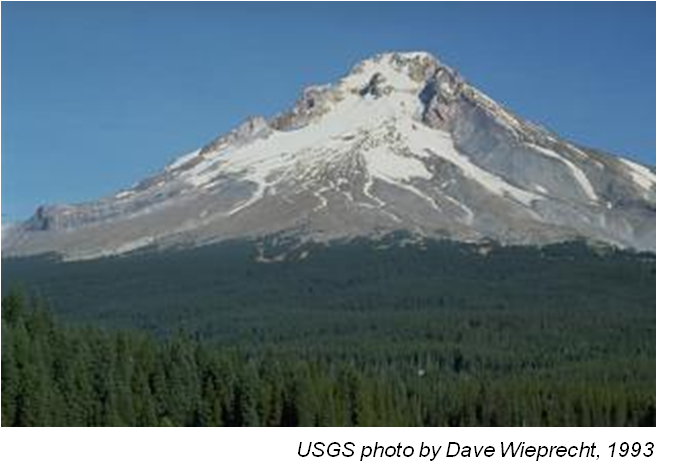Mount Hood Field Trip
Saturday September 14th, 9:00 AM to 5:00 PM
Trip Leaders: Adam Kent, Oregon State University

Mount Hood is the highest point in the state of Oregon. It is a stratovolcano built by successive andesitic and dacitic lava dome and lava flow eruptions, along with associated mass flow deposits, over the last ~500,000 years. Mount Hood is also the site of Oregon’s youngest volcanic eruption, which occurred in the late 1780’s, and the effects of this eruption on local rivers were noted by Lewis and Clark in diary entries from November 1805. Mount Hood also experienced a major sector collapse event ~1500 years ago – the effects of which are still visible as the smooth Timberline surface on the south side of the volcano, and upon which Timberline Lodge is hosted.
This field trip will examine the effects of recent eruptions of Mount Hood, focusing on eruptive styles and products. The trip is appropriate for all levels of geologic background. The total estimated hiking distance is less than two miles, some of it on uneven ground.
Note: We will meet in the Mount Hood area at 9:00 AM and the field trip will run until 5:00 PM. Please budget additional time for travel from Bend to Mount Hood and back. There will be a meet up location in Bend for arranging informal ridesharing. More information will be provided prior to the trip date.
Additional materials and background information:
Scott, W.E. and Gardner, C.A. (2017) Field-trip guide to Mount Hood, Oregon, highlighting eruptive history and hazardsin Field-trip guides to selected volcanoes and volcanic landscapes of the western United States. U.S. Geological Survey Scientific Investigations Report 2017-5022.
Volcanoes, including Mt. Hood, can go from dormant to active in a few months. Science Daily, 2014

Adam Kent
Oregon State University